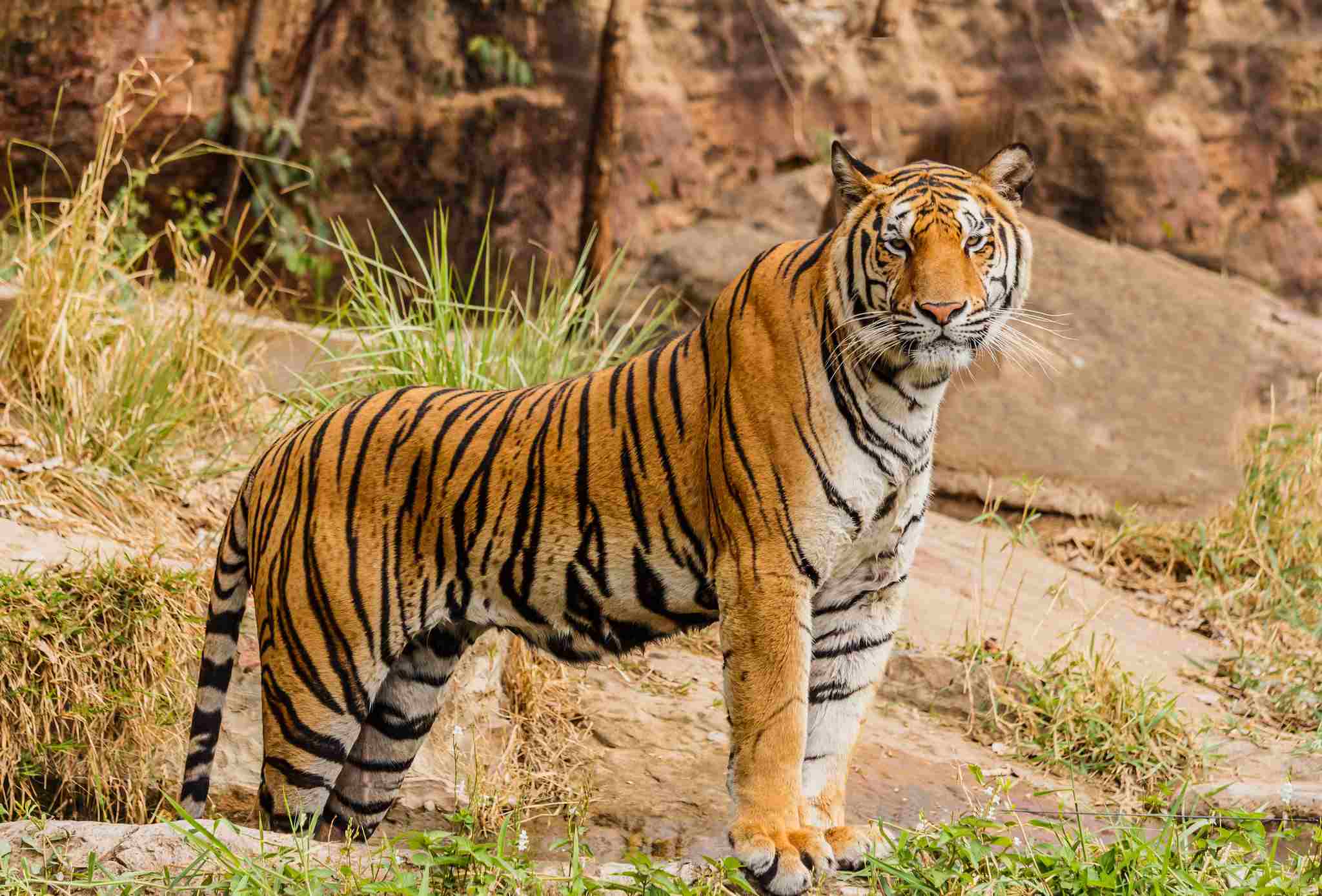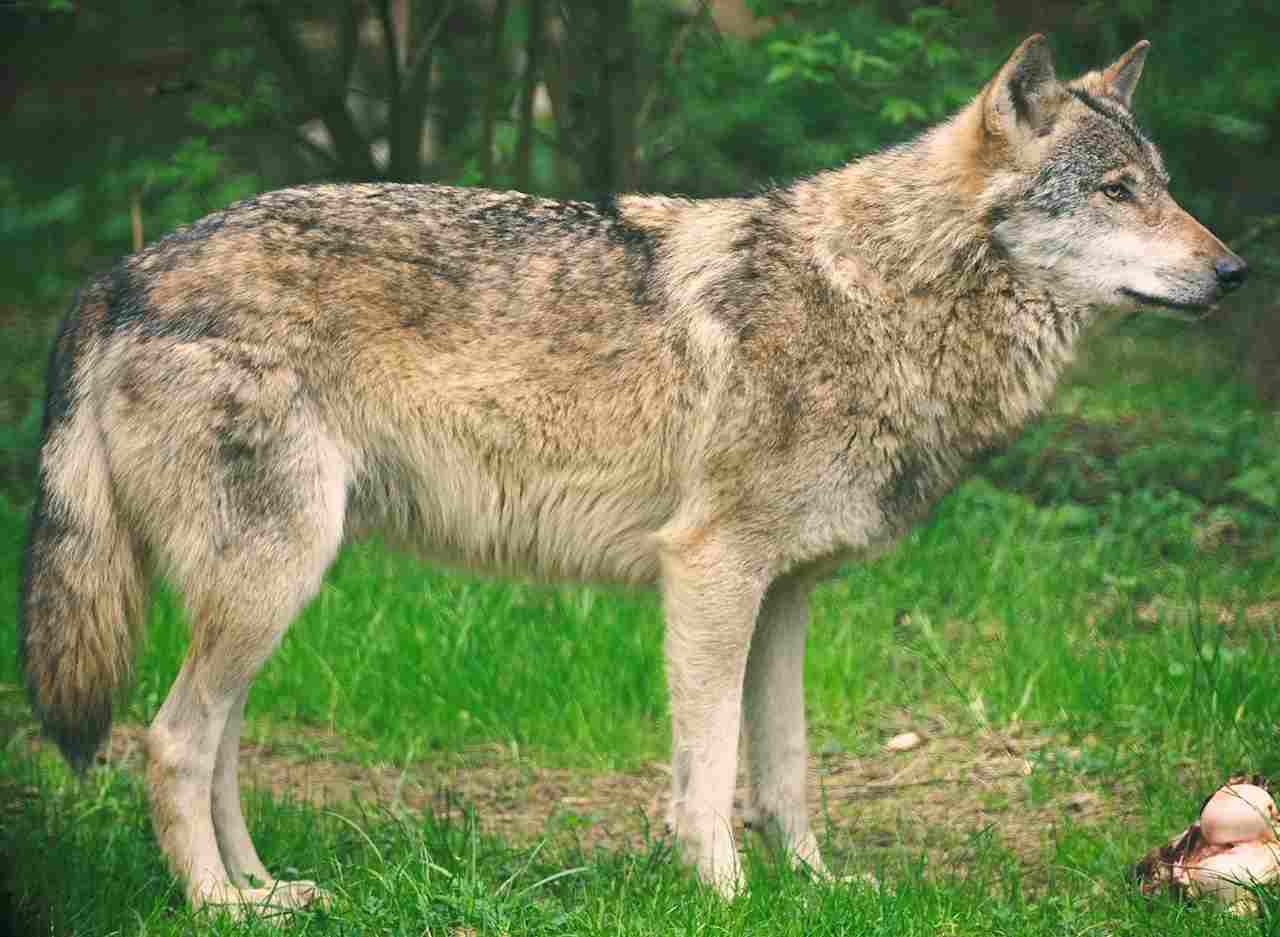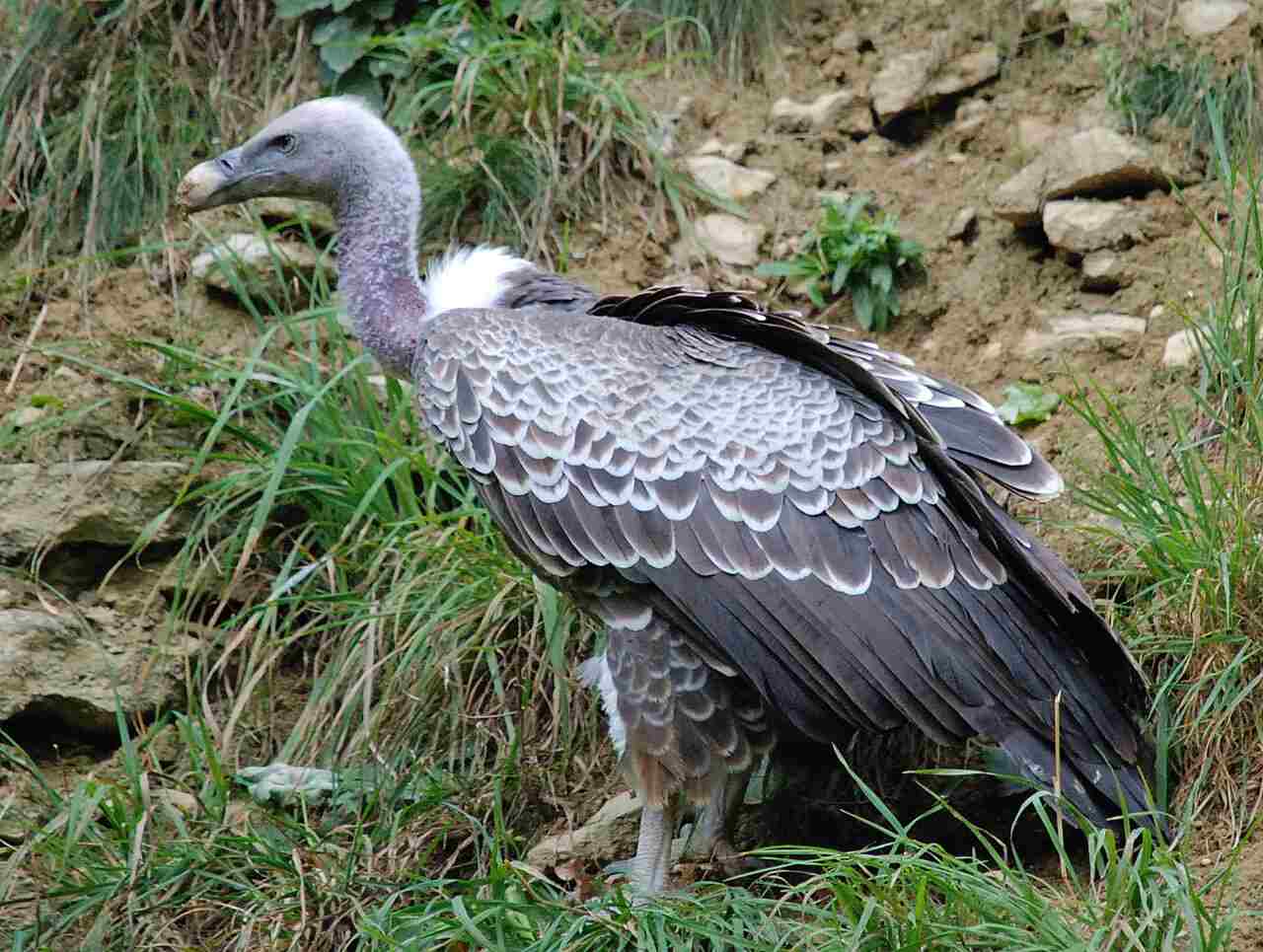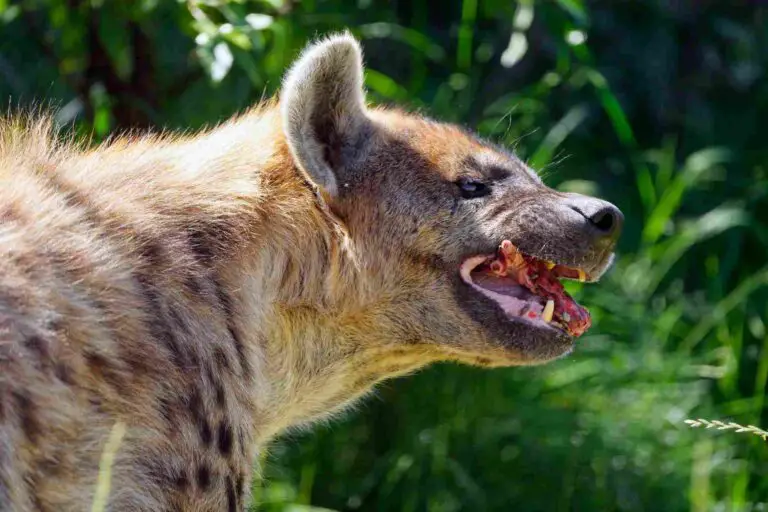Is a Tiger a Consumer? Tiger Food Chain Position and Role
Tigers are indeed consumers at an advanced trophic level within the ecological framework. As apex predators, they occupy the highest trophic level in many ecosystems, relying on other organisms for sustenance.
Tigers consume a variety of animals, primarily herbivores such as deer, wild boar, and antelope, making them quintessential consumers in food chains.
Their dependence on consuming other organisms for energy and nutrients aligns with the fundamental definition of a consumer in ecology. Tigers obtain their energy by feeding on the flesh of other animals, establishing their role as consumers in ecosystems.
Reasons Why a Tiger is a Consumer
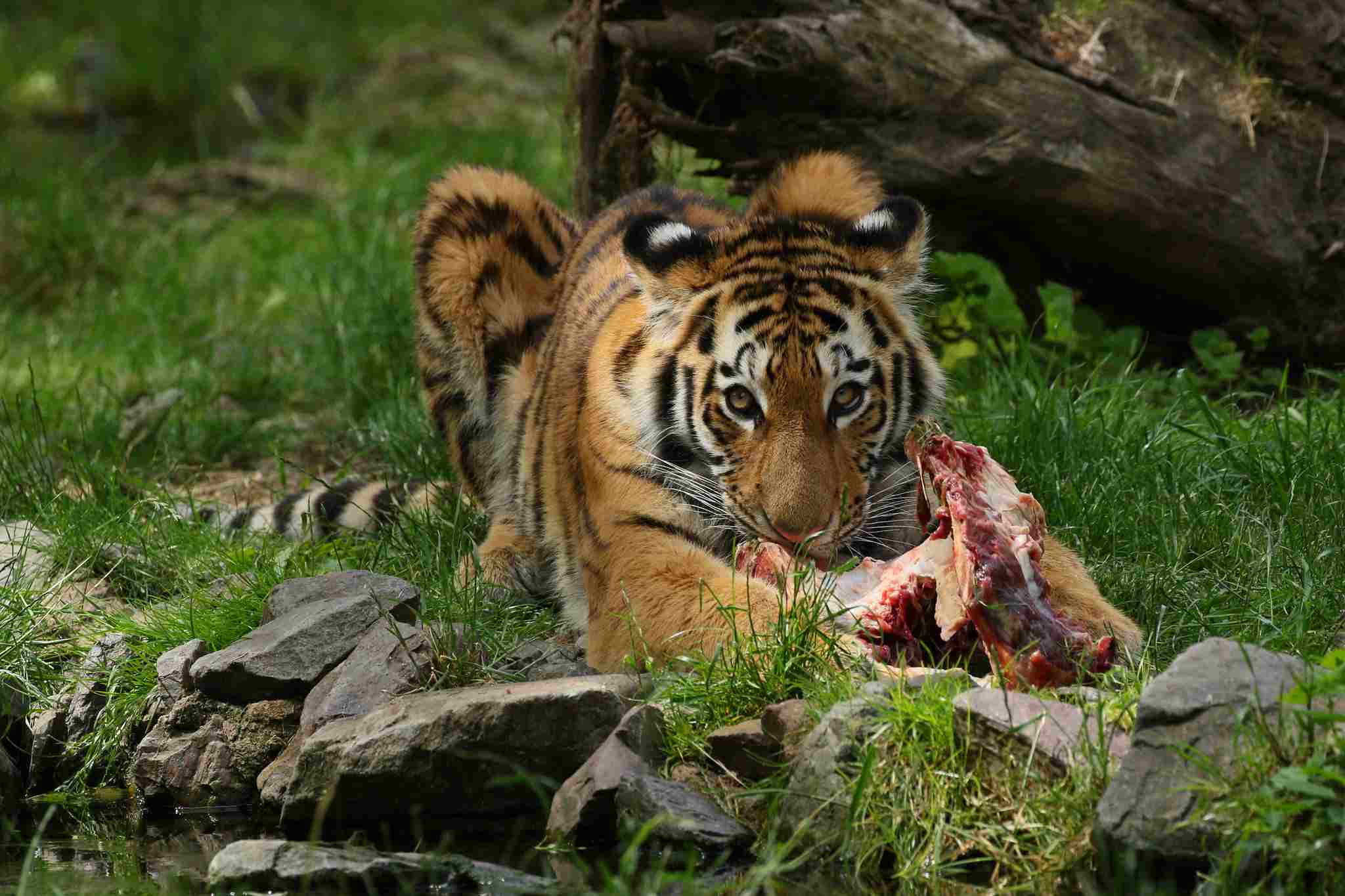
-
Predatory Behavior: Tigers exhibit carnivorous behavior, actively hunting and consuming other animals as their primary source of sustenance. This behavior is characteristic of consumers in ecological systems.
-
Dependency on Prey: Tigers rely entirely on other organisms, particularly herbivores, for meeting their nutritional needs. This dependence reinforces their classification as consumers within the trophic hierarchy.
-
Energy Transfer: As consumers, tigers facilitate the transfer of energy through the food chain. They consume energy-rich prey, converting it into their own biomass and metabolic energy, contributing to the flow of energy within ecosystems.
-
Absence of Photosynthesis: Unlike producers, such as plants, tigers lack the ability to synthesize their own food through photosynthesis. Instead, they obtain organic matter by consuming other living organisms, further emphasizing their consumer status.
-
Role in Trophic Dynamics: Tigers play a crucial role in regulating prey populations within their ecosystems. By preying on herbivores, they help control population sizes, which in turn affects vegetation dynamics and the overall balance of the ecosystem.
In general, the predatory nature and dietary habits of tigers exemplify their classification as consumers in ecological systems, highlighting their role in energy transfer and trophic dynamics.
What Type of Consumer is a Tiger?
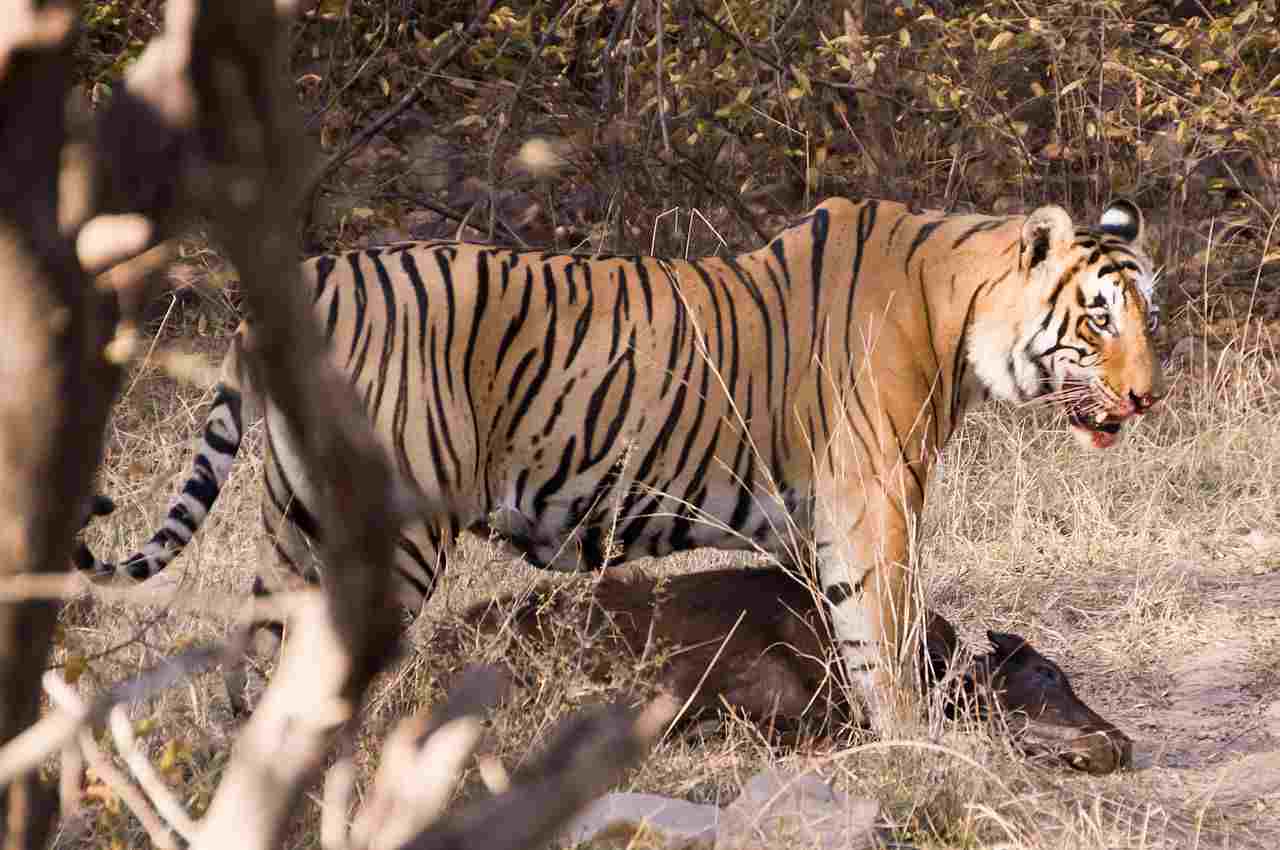
Tigers typically occupy the position of a tertiary consumer in many ecosystems, feeding on secondary consumers such as herbivores and smaller carnivores. However, in ecosystems with expansive food webs and abundant prey, tigers may ascend to the role of a quaternary consumer.
-
Tertiary Consumer Role: In most ecosystems, tigers serve as tertiary consumers, positioned at the top of the food chain. They prey on animals like deer, wild boar, and smaller carnivores, consuming organisms that themselves rely on primary producers for sustenance.
-
Quaternary Consumer Potential: In ecosystems characterized by intricate food webs and ample prey diversity, tigers may become quaternary consumers. This occurs when they consume other tertiary consumers, such as large carnivores or omnivores, further elevating their position in the trophic hierarchy.
-
Dietary Flexibility: Tigers exhibit dietary flexibility, adapting their consumption patterns based on prey availability and environmental conditions. This adaptability allows them to exploit different trophic levels, potentially transitioning between tertiary and quaternary consumer roles as ecosystem dynamics dictate.
-
Impact on Ecosystem Structure: Whether as tertiary or quaternary consumers, tigers play a vital role in shaping ecosystem structure and dynamics. Their position at the upper trophic levels influences prey populations, predator-prey relationships, and the overall balance of the ecosystem.
While tigers primarily function as tertiary consumers, their classification may shift to quaternary consumers in ecosystems with extensive niches and diverse prey populations. This adaptability underscores their importance in maintaining ecosystem stability and biodiversity.
Reasons Why a Tiger is a Tertiary Consumer
-
Predation of Secondary Consumers: Tigers primarily prey on herbivores and smaller carnivores, which are classified as secondary consumers in the food chain. By consuming these organisms, tigers fulfill the role of tertiary consumers within the trophic structure.
-
Position at the Top of the Food Chain: As apex predators, tigers occupy the highest trophic level in many ecosystems. Their position at the top of the food chain places them squarely in the category of tertiary consumers, exerting top-down control on prey populations.
-
Dependence on Lower Trophic Levels: Tigers depend entirely on the energy and nutrients derived from consuming organisms at lower trophic levels. Their reliance on secondary consumers for sustenance solidifies their classification as tertiary consumers in ecological systems.
-
Contribution to Energy Flow: By consuming secondary consumers, tigers facilitate the transfer of energy through the food chain. They assimilate energy from prey organisms into their own biomass, participating in the flow of energy within ecosystems.
-
Role in Trophic Dynamics: As tertiary consumers, tigers play a crucial role in regulating populations of herbivores and smaller carnivores. Their predation helps maintain ecological balance by controlling prey numbers and influencing species interactions within the ecosystem.
Therefore, the predatory behavior of tigers targeting secondary consumers, their position at the apex of the food chain, and their role in energy transfer and trophic dynamics all contribute to their classification as tertiary consumers in ecological systems.
What is a Tiger’s Food Chain Position?
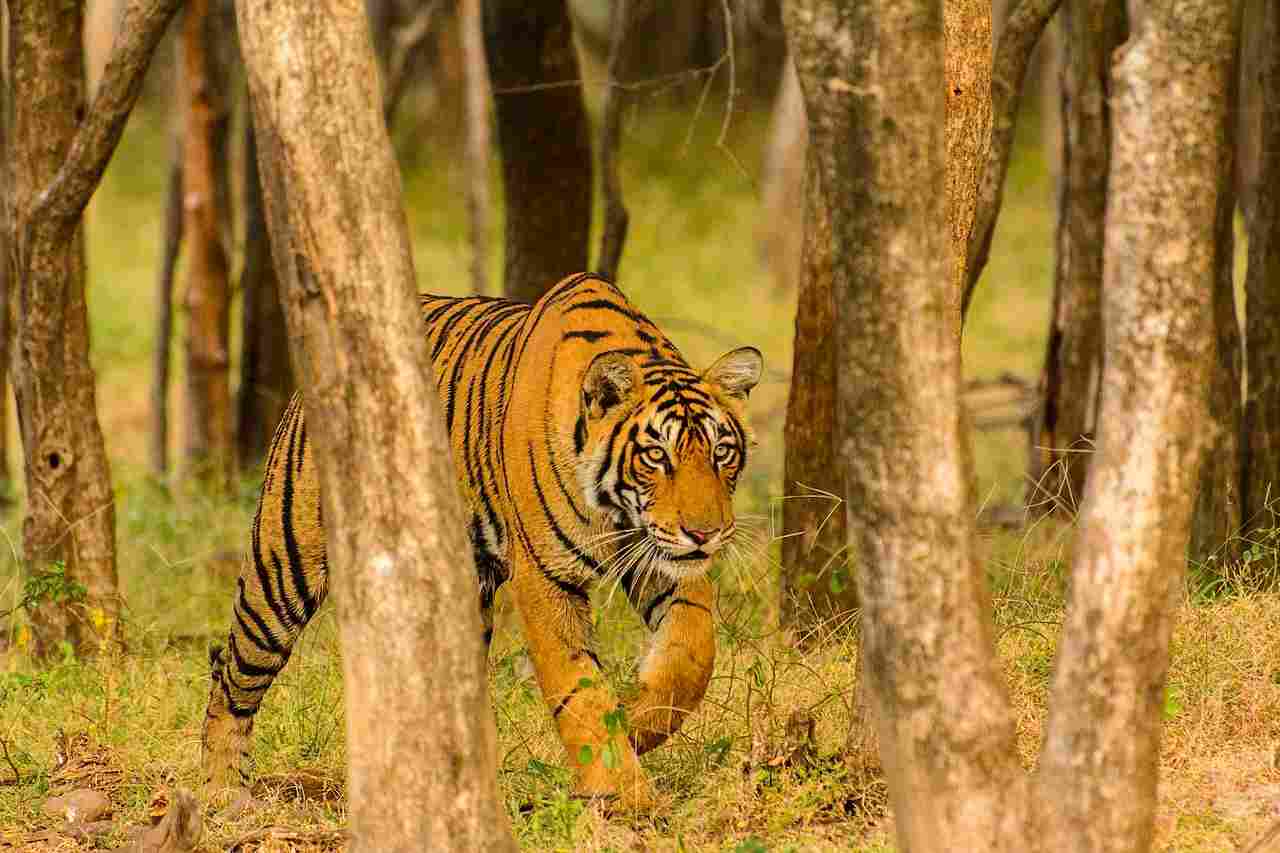
Tigers occupy the position of top predators in most ecosystems where they reside, positioning them at the highest trophic level within the food chain. As apex predators, they play a critical role in regulating the populations of prey species and maintaining the balance of their respective ecosystems.
-
Apex Predator Status: Tigers are apex predators, meaning they have no natural predators of their own within their ecosystems. Their position at the top of the food chain affords them a unique role in influencing the dynamics of the entire ecosystem.
-
Predatory Behavior: Tigers primarily prey on herbivores and smaller carnivores, exerting top-down control on the populations of these organisms. By regulating prey numbers, they indirectly influence vegetation dynamics and other species within the ecosystem.
-
Energy Flow: As apex predators, tigers participate in the flow of energy through the food chain. They acquire energy by consuming other animals, transferring it into their own biomass and sustaining themselves while contributing to the overall energy dynamics of the ecosystem.
-
Ecological Importance: Tigers’ presence as top predators helps maintain biodiversity and ecosystem stability. Their predation prevents any single species from dominating the ecosystem and promotes species diversity by regulating prey populations.
-
Key Role in Trophic Cascades: Changes in tiger populations can lead to trophic cascades, affecting the abundance and behavior of organisms at lower trophic levels. For example, a decline in tiger numbers could result in an increase in prey populations, which may in turn impact vegetation and other ecosystem components.
In essence, tigers’ position as apex predators places them at the pinnacle of the food chain, where they exert significant influence over ecosystem dynamics and contribute to the overall health and functioning of their habitats.
Is Tiger A Producer Or Consumer?
Tigers are unequivocally consumers within ecological systems. Unlike producers, such as plants and algae, which produce their own food through photosynthesis, tigers rely entirely on consuming other organisms for sustenance. As carnivores, their diet consists primarily of herbivores and occasionally other carnivores, reaffirming their status as consumers in the trophic hierarchy.
Are Tigers Primary Producers?
No, tigers are not primary producers. Primary producers are organisms, such as plants and algae, that synthesize organic compounds from inorganic substances through photosynthesis or chemosynthesis. Tigers lack the ability to produce their own food through these processes and instead obtain nutrients and energy by consuming other living organisms. Therefore, tigers are classified solely as consumers within ecological systems, specifically as tertiary or quaternary consumers depending on the ecosystem’s complexity.
Reasons Why Tigers are Not Primary Producers
-
Lack of Photosynthesis: Tigers lack the capability to perform photosynthesis, a defining characteristic of primary producers. Unlike plants and algae, which can convert sunlight into energy to produce organic compounds, tigers rely on consuming other organisms for their nutritional needs.
-
Dependency on Other Organisms: Tigers depend entirely on consuming other living organisms, particularly herbivores and smaller carnivores, to obtain energy and nutrients. Their inability to produce their own food further underscores their classification as consumers rather than producers.
-
Predatory Behavior: Tigers exhibit carnivorous behavior, actively hunting and preying on other animals as their primary source of sustenance. This predatory behavior aligns with their role as consumers within the food chain, distinct from the autotrophic nature of primary producers.
-
Position in Trophic Hierarchy: Tigers occupy a high trophic level in ecosystems as apex predators, indicating their role as consumers rather than producers. Their position at the top of the food chain reinforces their status as secondary or tertiary consumers, dependent on other organisms for energy transfer.
Is a Tiger a Carnivore?

Yes, tigers are obligate carnivores, meaning their diet consists primarily of meat. Their predatory behavior and specialized anatomical features, such as sharp teeth and claws, are adapted for hunting and consuming other animals. Tigers typically prey on herbivores, such as deer and wild boar, although they may occasionally consume smaller carnivores as well. Their carnivorous diet and hunting behavior classify them unequivocally as carnivores within ecological systems.
Reasons Why a Tiger is a Carnivore
-
Dietary Preferences: Tigers are obligate carnivores, meaning they rely solely on meat for their nutritional needs. Their digestive systems are adapted to efficiently process animal proteins and fats, making them well-suited for a carnivorous diet.
-
Anatomical Adaptations: Tigers possess specialized anatomical features that facilitate hunting and consuming prey. Sharp teeth, powerful jaws, and retractable claws are all adaptations designed for capturing and subduing other animals.
-
Predatory Behavior: Tigers exhibit distinct predatory behavior, actively stalking, chasing, and ambushing prey before consuming them. Their hunting strategies and techniques are characteristic of carnivorous animals, further reinforcing their classification as carnivores.
-
Nutritional Requirements: Tigers require specific nutrients found abundantly in animal tissues, such as essential amino acids and certain vitamins. Their physiological makeup is optimized for metabolizing meat-based diets, reflecting their evolutionary adaptation to carnivory.
Tiger Food Chain Position And Role
Tigers occupy a pivotal role in the food chain as apex predators, exerting significant influence over ecosystem dynamics.
-
Top Predator: As apex predators, tigers regulate the populations of prey species, controlling herbivore numbers and indirectly impacting vegetation dynamics.
-
Energy Transfer: Tigers participate in the flow of energy through the food chain by consuming other animals and converting their biomass into metabolic energy. This energy transfer sustains the tiger population and contributes to ecosystem functioning.
-
Biodiversity Maintenance: By preying on a variety of species, tigers help maintain biodiversity within their ecosystems. Their presence prevents any single species from becoming dominant and promotes species coexistence.
-
Ecosystem Stability: Tigers play a crucial role in maintaining the balance and stability of their habitats. Their predatory activities control prey populations, which in turn affects species interactions and ecosystem health.
In general, this implies that tigers’ position as apex predators confers upon them a key role in food chain dynamics and ecosystem functioning, highlighting their importance in maintaining ecological balance and biodiversity.
*Summary
| Aspect | Description |
| Classification as Consumers |
Tigers are consumers, relying on other organisms for sustenance. They lack the ability to produce their own food through photosynthesis, distinguishing them from primary producers.
|
| Not Primary Producers |
Tigers are not primary producers due to their inability to perform photosynthesis. They depend entirely on consuming other organisms for energy and nutrients.
|
| Carnivorous Nature |
Tigers are obligate carnivores, with a diet primarily consisting of meat. Their anatomical features and predatory behavior reflect their adaptation to a carnivorous lifestyle.
|
| Role as Apex Predators |
Tigers occupy the position of apex predators in the food chain, regulating prey populations, facilitating energy transfer, maintaining biodiversity, and promoting ecosystem stability.
|
